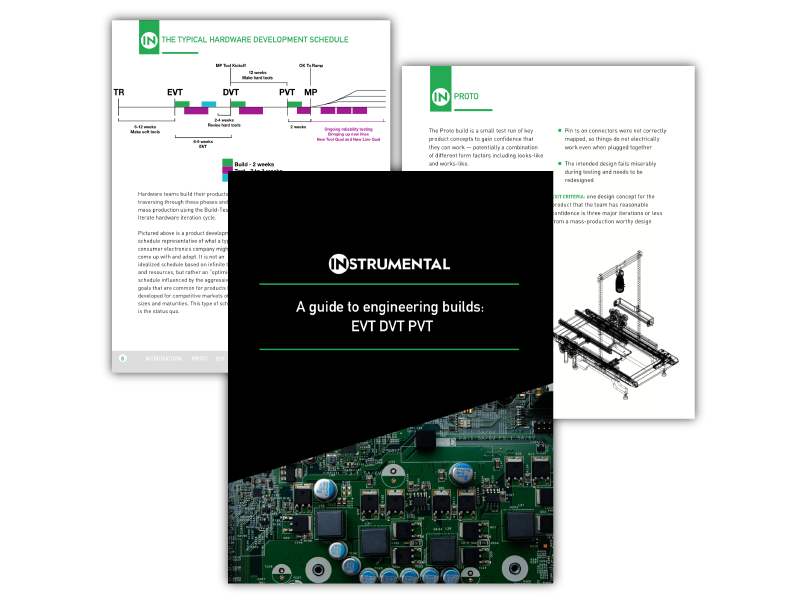Download the best guide EVT, DVT, and PVT engineering builds
Get 14 pages of clear definitions, workflows, best practices, causes for schedule delays, and more!
Clear definitions, workflows, schedules, tips, and more that will help you accelerate product maturity and reduce delays.

Get 14 pages of clear definitions, workflows, best practices, causes for schedule delays, and more!
While software engineers may write code, hardware engineers speak it. We love our three-letter acronyms (TLAs): EVT, DVT, PVT, MP; OK, NG, FA, CA; PD, EPM, OPM; PRD, DRP, BOM. Goodness, how do we even understand each other?
Instrumental spends a lot of time speaking with engineers at hardware companies — large and small — about their manufacturing pain points. In the course of those conversations, we are always talking about those pain points in the context of product maturity and the builds: EVT, DVT, PVT, and MP. While a few companies use slightly different nomenclature, the basic structure is consistent: you build prototypes of the design multiple times to zero in on the final, mass production ready design.
Interestingly enough, there are differences in understanding across the consumer electronics industry on what EVT and DVT product maturity even mean. Internet searches do not return satisfying results, so early hardware companies have this question a lot. Instrumental put together this guide to explain the builds, schedules, and common problem areas that hardware engineers work through.
Instrumental captures images on the assembly line and leverages AI to detect defects and enable manufacturing optimization from anywhere.